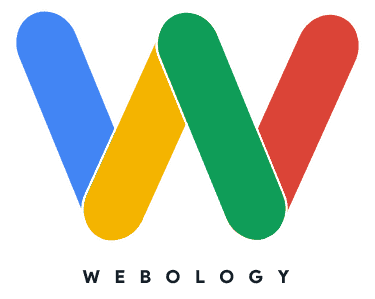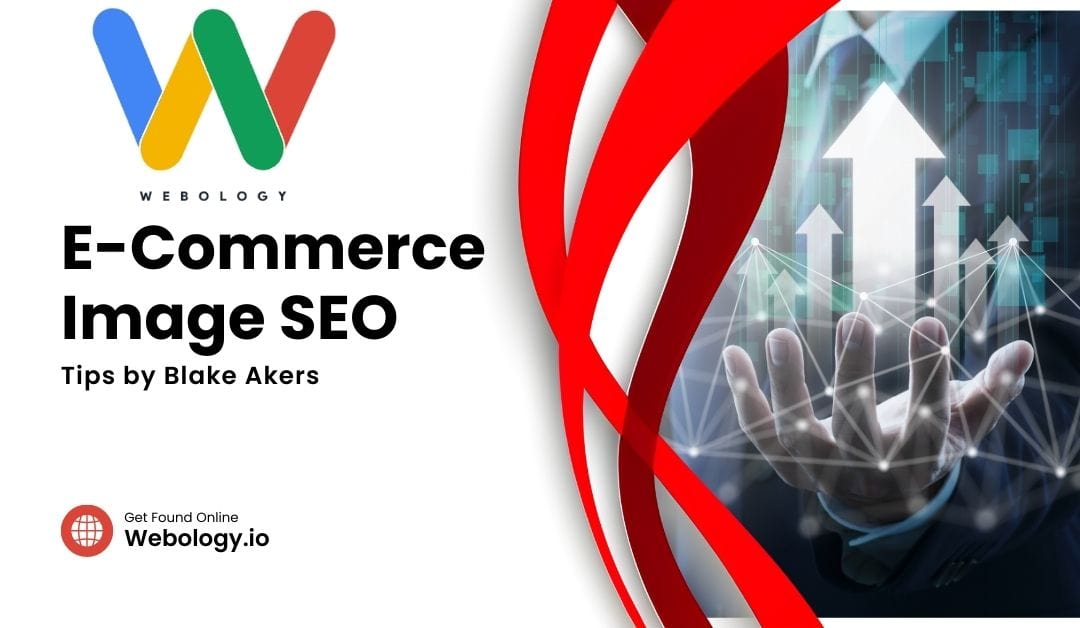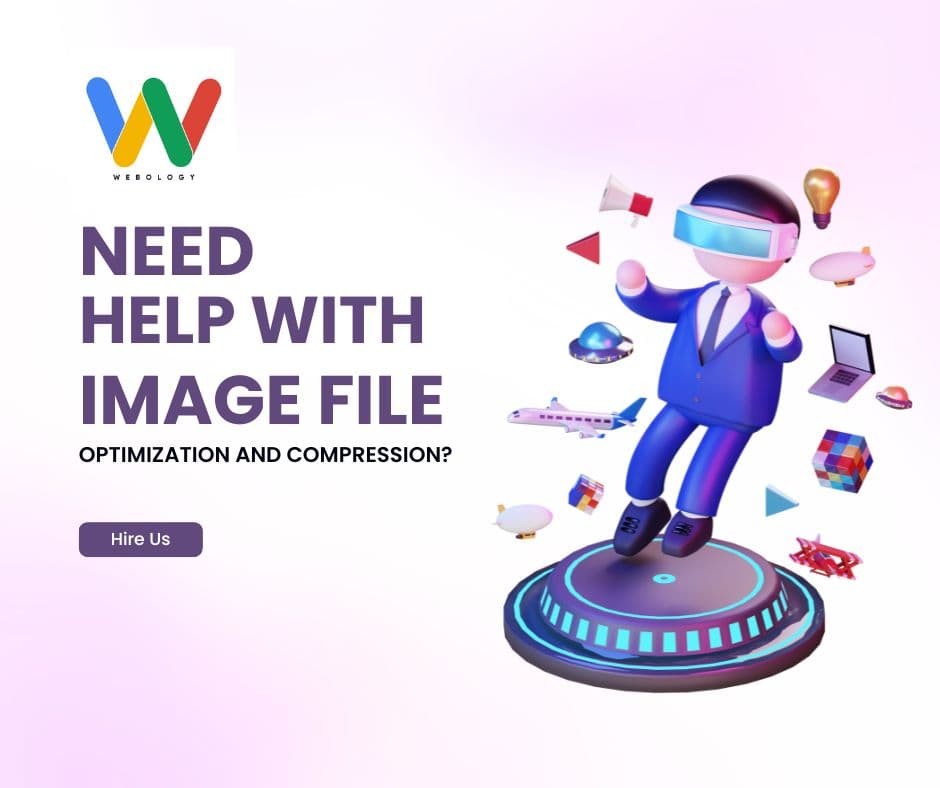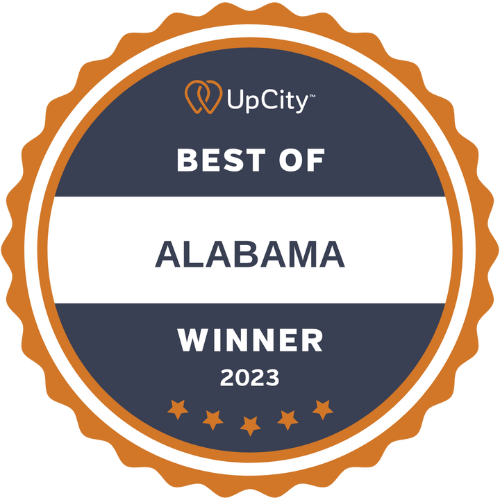Search engine optimization (SEO) is an important part of any eCommerce website’s success. It makes your brand visible to potential customers in search engines and ensures your products are easy to find. It takes a lot of work, but it is well worth the effort if you’ll just stay consistent and work on your website a little bit each month.
If you’re wondering how to SEO optimize images on an existing site though, you might be faced with thousands or even tens of thousands of media files to work on! How will you get it all done??? 😰
No worries, because at Webology we’ve been there and done that already. We have a simple and effective process to optimize images on your website for SEO in bulk that I’ll share with you below.
Table of Contents
In this article, we will fully discuss how to SEO optimize images for eCommerce. I’ll cover topics such as image naming, file size, image alt tags, and image captions. Follow my tips and your site will be ranking higher in no time!
How to Optimize Image File Names for SEO
Sooo many people overlook this step and just upload whatever random set of numbers and letters the camera assigned to their photos. But did you know that the file name of your image actually plays a role in SEO? That’s right, search engines use file names as part of their algorithm for ranking websites.
‘Uhhh but Blake, I read on some SEOs blog that those don’t matter anymore’? Yes, okay whatever, I get it. There are constant debates about the importance of image file names in SEO. It’s absolutely true that this is a very minor ranking factor, but it’s still been tested and proven to give you a slight boost. So why be lazy? Start with your new images and develop a proper naming process for your publishing team.
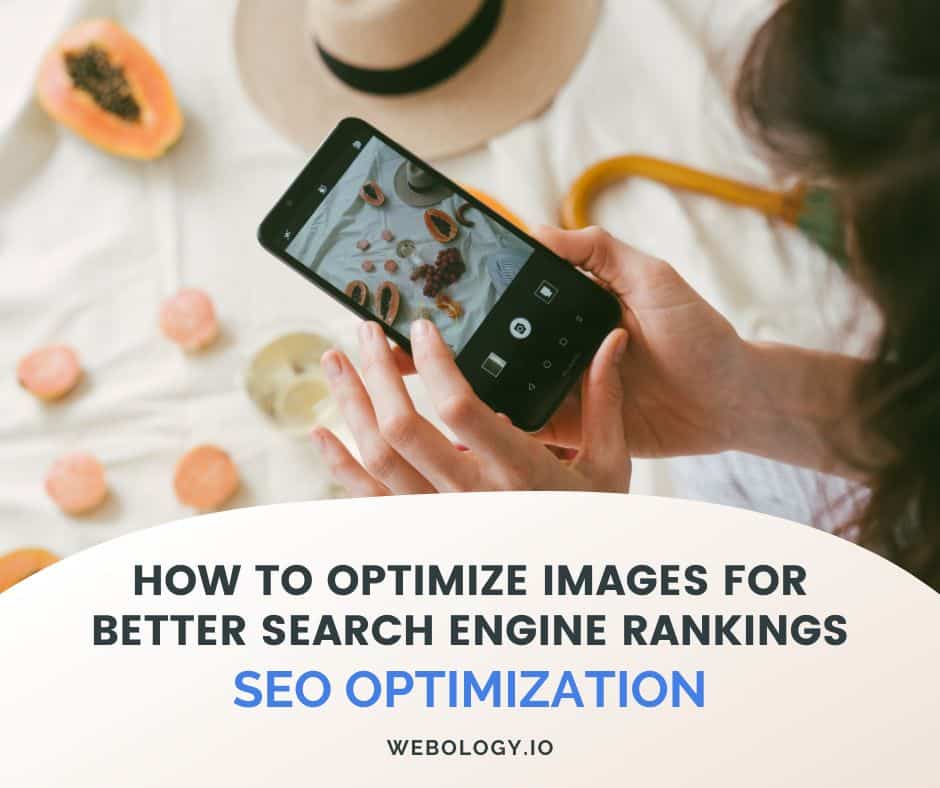
Roll up your sleeves and optimize those image file names for maximum SEO impact!
1. Keep it Short and Sweet: When it comes to image file names, shorter is better. Try to keep your file names to two or three words at most.
2. Use Keywords: Make sure to include relevant keywords in your image file names. This will help search engines understand what your image is about and make it easier for people to find it.
3. Avoid Special Characters: Special characters like underscores, hyphens, and brackets can confuse search engines, so it’s best to avoid them.
4. Be Creative: Don’t be afraid to get creative with your image file names. Think of something that will make people smile and remember your image.
Now for your existing media, hopefully you’re using WordPress because there is a simple, AI-driven plugin solution to bulk edit the actual file names within your media library. This will save you a lot of time and effort in manually editing each file name.
How to Choose the Right File Format for SEO Optimized Images
Another change you probably need to make to your publishing process is to choose the proper image file type. There are different file types that work best for web or print, and there are even some specific formats that Google prefers for image SEO.
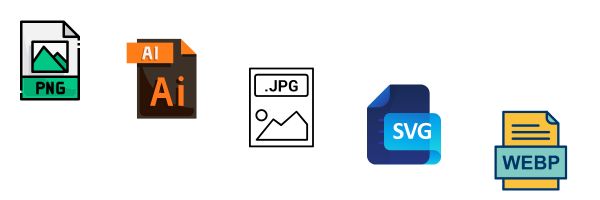
First off, let’s talk about the most commonly used image formats: JPEG, PNG, and GIF.
JPEG:
This is the most popular and widely used format for images on the web. It offers high quality while keeping file sizes relatively small. However, one downside to using JPEGs is that they do not support transparent backgrounds. So your logo files and icons typically will not use this one. Instead your web developer will probably use a .PNG or the more modern .SVG format.
PNG:
This format is great for images with transparent backgrounds as it supports alpha channels. It also allows you to save your image without losing any quality. However, the downside is that PNG files can be larger in size compared to JPEGs.
GIF:
GIFs have been around since the very first memes hit the internet. They are great for short animations and tend to have small file sizes. However, they are limited to 256 colors which can result in a lower quality image compared to JPEGs or PNGs.
Modern Image File Types
These days, a lot of developers are completely moving away from JPEG and PNGs in favor of the SVG format. This is because SVGs are vector based, meaning they use mathematical equations to create the image rather than pixels. This allows for scalability without losing quality, making them perfect for responsive web design. Personally, I prefer to use SVGs whenever possible as they offer the best of both worlds – small file sizes and high quality images.
How to Compress Images for Faster Loading Times and SEO Optimization
So at this point, you have worked with your developer to select a file type, named your images appropriately and now, it’s time to compress them down for web format. You have a lot of options like:
- ShortPixel Image Optimizer
- Smush – Compress, Optimize and Lazy Load Images
- EWWW Image Optimizer
- Imagify – Optimize your Images & Convert WebP
- TinyPNG – Compress JPEG & PNG images
You can compress the files prior to upload or if you’re a WordPress user, just install one of these plugins I mentioned above and walk through the setup process.
How to Use Alt Text to Improve Image SEO
Now that your images are properly compressed, it’s time to add some descriptive text. Alt text, or alternative text, is used to describe images for search engines and assistive technologies. This not only helps with accessibility for users with visual impairments but also improves your image SEO.
So, how do you use alt text to improve your image SEO? Here are a few tips:
1. Keep it short and sweet. Alt text should be no more than 125 characters, so make sure you get your point across quickly and clearly.
2. Use keywords. Include relevant keywords in your alt text to help search engines understand what the image is about.
3. Be descriptive. Don’t just use generic words like “image” or “photo”. Describe the image in detail so search engines can better understand it.
4. Have fun with it. Alt text doesn’t have to be boring! Get creative and have some fun with it.
In addition to alt text, it’s important to also optimize other elements of your website’s media such as titles, descriptions, and captions. Congrats! If you’ve read my guide this for and completed these steps, you’re already way ahead of most eCommerce business owners when it comes to SEO for images.
Now I’m going to show you how to take your site to the next level with advanced optimization techniques.
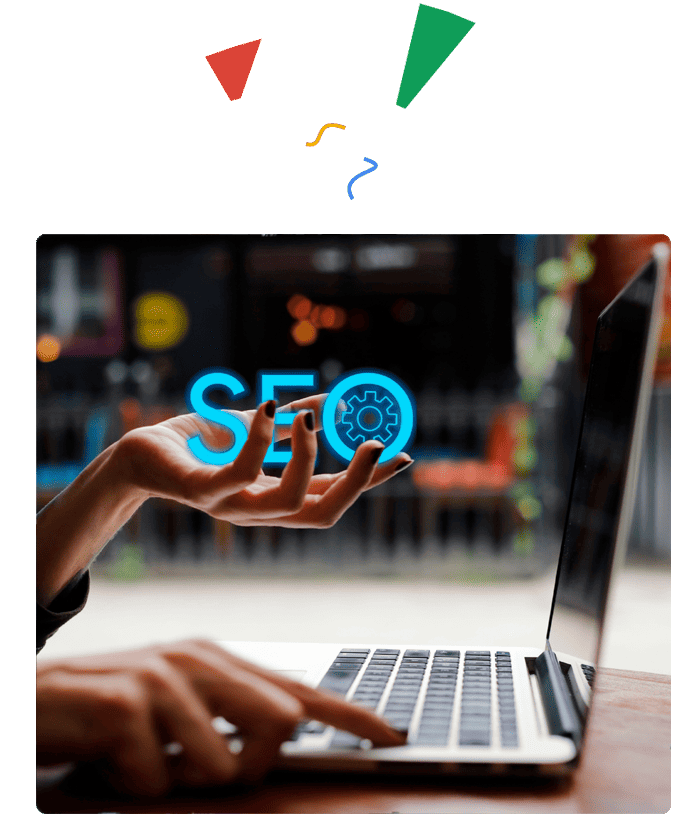
How to Create Image Sitemaps for SEO Optimization
Image sitemaps are a great way to make sure your website is optimized for search engine crawlers. Most SEO plugins will automatically create a sitemap for your website, but if not, here’s how to manually create an image sitemap.
1. Start by creating a list of the URLs of all the images on your website. This can be done using tools like Screaming Frog or SEMrush.
2. Once you have your list, use a free online sitemap generator like XML-Sitemaps.com to create an XML sitemap specifically for images.
3. Submit this new image sitemap to Google Search Console and Bing Webmaster Tools.
4. Make sure to update and resubmit your image sitemap whenever you add new images to your website.
5. Additionally, include a link to your image sitemap in your robots.txt file so that search engines can quickly find it.
How to Use Structured Data to Improve Image SEO
Structured data is a way of organizing and labeling your website’s content to make it easier for search engines to understand. By adding structured data specifically for product images, you can improve their visibility in search results.
1. Start by identifying the types of images on your website that are relevant to your business or industry.
2. Use Google’s Structured Data Markup Helper to mark up these images with the appropriate schema tags.
3. Once you have marked up your images, test them using Google’s Structured Data Testing Tool to ensure they are properly recognized by search engines.
You can also leverage premium plugins like RankMath Pro to quickly mark up your entire media library with structured data. This can save you time and effort in manually adding schema tags to each individual image, and I really like RankMath. A quick check of this page’s source code will show you that we use it internally for our own efforts.
Best Hosting and CDN Options for Optimizing Images for Web Performance
The last step we need to discuss is evaluating your website’s hosting and CDN options in order to optimize your images for web performance. Hosting and CDNs (Content Delivery Networks) play a crucial role in the speed and accessibility of your website, and can greatly impact the loading time of your images.
First, let’s discuss hosting. When choosing a hosting provider for your website, it’s important to consider their server capabilities and how they handle image optimization. Look for providers that offer SSD storage, as this can significantly improve load times.
Next, consider using a CDN to deliver your images. A CDN is a network of servers located around the world that store copies of your website’s content. This allows users to access your site from a server that is geographically closer to them, reducing the distance and time it takes for your images to load. Here’s a table comparing a few options I’ve worked with:
| Image Optimization Techniques | CDN Network Reach | Supported Image Formats | CDN Caching | Additional Features | Pricing Structure | |
|---|---|---|---|---|---|---|
| Cloudflare | Polish, Mirage | Global | JPEG, PNG, GIF, WebP | Edge Caching | DDoS protection, SSL, Web Application Firewall | Free tier available; Pro plans start at $20/month |
| Imgix | Real-time image processing | Global | JPEG, PNG, GIF, SVG, WebP | Immutable Caching | Advanced image editing, Analytics | Pay-as-you-go; starts at $10/month |
| Akamai | Image & Video Manager | Global | JPEG, PNG, GIF, WebP, BMP, TIFF | Advanced caching options | Adaptive delivery, Security features | Custom pricing |
| Fastly | Real-time image transformation | Global | JPEG, PNG, WebP | Instant Purging | Real-time logging, Edge computing | Usage-based pricing; minimum $50/month |
| KeyCDN | Automatic format selection | Global | JPEG, PNG, GIF, WebP | Instant Purging | Zones, Secure Token | Pay-as-you-go; $0.04/GB |

For reading this far! Let’s wrap up this article with a brief FAQ and my final thoughts below:
FAQs on E-Commerce Image Optimization
1. What is SEO optimization for images?
SEO optimization for images is the process of optimizing images for search engine visibility. This includes using relevant keywords in the image file name, alt text, and caption, as well as compressing the image size to reduce page loading time.
2. Why is SEO optimization for images important?
SEO optimization for images is important because it helps search engines understand what the image is about and how it relates to the content on the page. This can help improve the visibility of the page in search engine results, which can lead to more traffic and potential customers.
3. What are the best practices for SEO optimization for images?
The best practices for SEO optimization for images include using relevant keywords in the image file name, alt text, and caption, compressing the image size to reduce page loading time, and using descriptive captions to provide context for the image.
My Final Thoughts
I hope this information has shed some light on the importance of SEO optimization for images and how it can benefit your E-Commerce website’s overall search engine ranking. Just because you have thousands of images, it doesn’t have to take forever to optimize them. By following these best practices and using the tools I suggested, you can easily improve your website’s visibility and attract more potential customers. Remember to regularly review and update your images with proper optimization techniques for maximum results. Happy optimizing from the team at Webology!
Webology
We’re a digital marketing agency that specializes in helping businesses of all sizes optimize their online presence. Our team of experts understands the importance of image optimization and we have the tools, techniques, and experience to take your site to the next level.
Image optimization is crucial for search engine ranking and overall user experience. With the growing importance of visual content, it’s essential that your website has high-quality images that are properly optimized.
